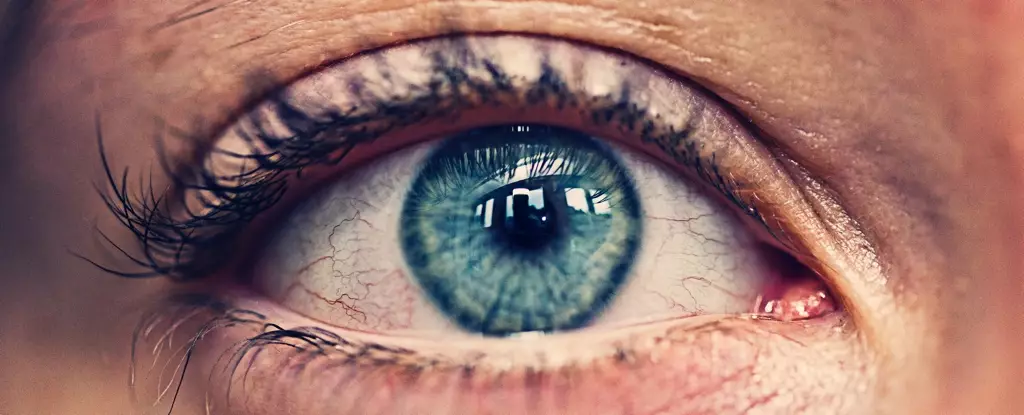In a heart-wrenching narrative, farmworker Alka Kamble’s struggle highlights a significant and overlooked consequence of climate change: its impact on our eye health. For five long months in 2017, Kamble endured blurry vision in her eye without seeking medical help. The reason for her inaction reflects a haunting reality—financial instability and overwhelming work hours left her no choice but to prioritize survival over health. The free eye check-up she eventually discovered proved to be a pivotal moment, revealing a cataract necessitating immediate surgical intervention. It is sobering to consider that Kamble’s ordeal is just a single thread in an extensive tapestry of individuals grappling with similar battles, as the intersection of inadequate healthcare and climate change continues to function like a cruel compass directing us toward worsening health outcomes.
Kamble’s experience unveils a stark reality for many agricultural workers, who are now facing unprecedented heat waves exacerbated by climate change. In regions where the sun scorches relentlessly, and working outside becomes akin to a fight for survival, the burden of health issues escalates dramatically. With the combination of intense heat becoming somewhat of a new normal, workers like Kamble are often trapped in cycles of hardship that leave them vulnerable to chronic conditions, including those affecting the eyes.
The Invisible Culprits of Deterioration
Cataracts, the clouding of the eye’s lenses leading to impaired vision, are a condition exacerbated by various factors, including genetics, aging, and perhaps most alarmingly, the effects of climate change. Recent findings have positioned climate as a significant risk factor in ocular health, where UV radiation and rising temperatures collaborate to fuel a public health crisis largely unnoticed by the mainstream dialogue.
Lucía Echevarría-Lucas, an ophthalmologist, elucidates how heat exposure at extreme levels fundamentally alters existing biological systems, especially through incidents of heatstroke. In turn, heatstroke exacerbates the production of reactive oxygen species—harmful molecules that, when out of balance, can inflict severe damage upon the eye lens. Unfortunately, this damage is progressive and irreversible, as the eye’s crystalline proteins struggle to maintain their clarity and structure under prolonged exposure to these threats.
A ten-year study conducted in southern Spain brought alarming statistics to light—a correlation between rising temperatures and an increase in cataract cases, particularly within agricultural communities. The results displayed that a mere one-degree Celsius rise could lead to an additional 370.8 cataract cases per 100,000 inhabitants. More disturbingly, this study showed a shift toward younger age demographics developing cataracts, revealing negligence in addressing the health needs of those who toil under the sun.
Beyond Cataracts: A Cascade of Ocular Disorders
The story doesn’t end with cataracts alone; climate change is instigating a proliferation of other eye disorders that demand urgent attention. Variations in temperature and environmental conditions are directly linked to conditions like keratitis (inflammation of the cornea) and conjunctivitis (pinkeye), demonstrating a worrying trend of declining eye health. In regions like northwestern China, a stark increase in conjunctivitis rates has been noted when temperatures rise above relatively mild thresholds. Such research highlights how eye health deteriorates even in the face of climate shifts that many might dismiss as trivial.
In totality, these ocular conditions mirror another facet of the climate crisis—food insecurity and malnutrition complicating matters further. Climate-induced droughts compromise essential nutrients needed for optimal eye health, leading to deficiencies that pose long-term risks to vision. This creates a vicious cycle where agricultural workers, already susceptible to climate’s adverse impacts, face compounded health setbacks merely due to the environmental changes affecting food production.
Creating Pathways for Protection
Acknowledging these connections directly influences the development of health interventions tailored to protect vulnerable populations. Implementing systemic changes—such as ensuring access to shade for outdoor workers and emphasizing the importance of protective eyewear—may prove crucial in safeguarding and promoting eye health. For instance, wide-brimmed hats and UV-filter sunglasses have shown substantial efficacy in shielding individuals from harmful solar rays. Moreover, dietary changes rich in essential vitamins may provide further protective benefits, necessitating public health campaigns to educate about these simple yet effective measures.
On a larger scale, addressing greenhouse gas emissions and ozone-depleting substances stands as an imperative goal for global health advocates. The relationship between climate and eye health isn’t merely theoretical; it articulates an urgent call to action that can influence policy decisions with the potential to protect communities from the unseen threats that climate change imposes on their wellbeing.
The story of Alka Kamble drives home a clear message—a deep awareness of the environmental and health crises is necessary not just for individual survival, but for the collective future where eyesight, a precious asset, remains unharmed amid escalating climatic calamities.


Leave a Reply